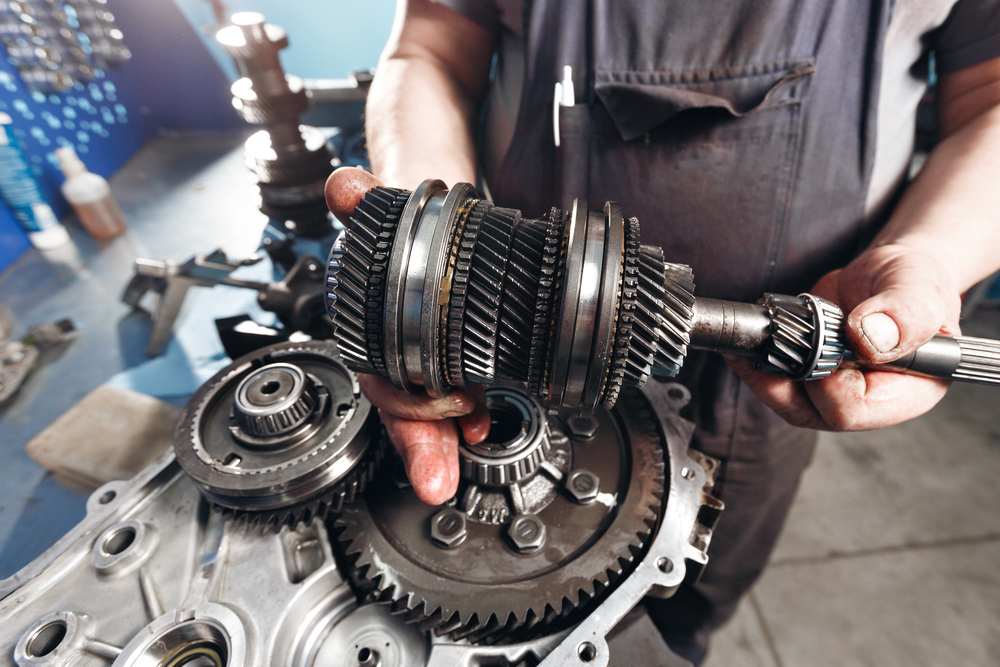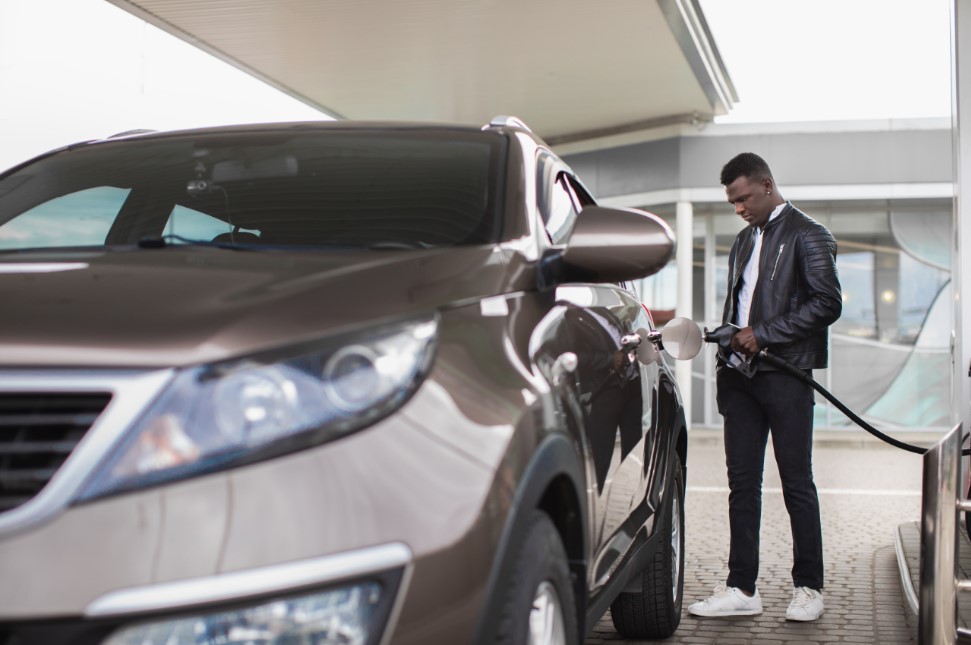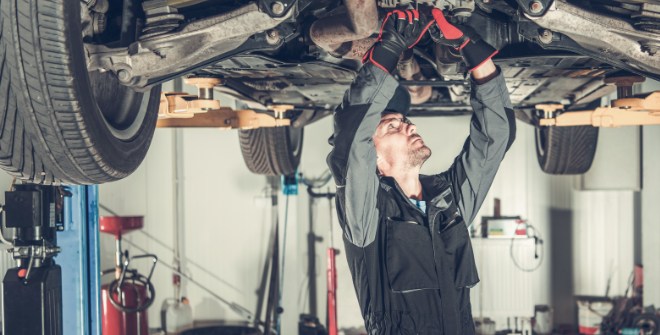Transmissions 101

There are numerous parts and systems in your vehicle working harmoniously to set it in motion, with the transmission playing a crucial role. To help you understand what a transmission does, the different types of transmissions, and why transmission service is vital for your vehicle's performance, Christian Brothers Automotive is here to walk you through the basics of it all.
What Does A Transmission Do?
The transmission in your car is responsible for transferring power from the engine to the drive axles and wheels, so they can move the vehicle forward or backward. It harnesses the power of your engine, converts that power into controlled “transmissions” of ongoing energy, and sources that power to all related parts in order to move your vehicle when, where, and how fast you want it to go. Another way of saying it–your transmission helps your car go faster and slower by shifting gears and ensuring an optimal balance of engine power and controllable vehicle speed.
That’s a simple explanation for a highly complex part in your engine bay. With a general idea of what a transmission does, let’s learn how it works.
How Transmissions Works: A Bicycle Gear Analogy
To better understand what a transmission does and how it works, think of it like this:
If you’ve ever ridden a bicycle before, you’ve probably noticed how it’s extremely difficult to pedal when going up a hill but much easier when going over flat ground.
However, a bike with gears changes this. By shifting down into a small gear, the bike becomes immensely easier to pedal, as the gears are set up to encourage more power with less speed. You won’t go anywhere quickly, but you’ll be able to get moving far faster and easier, which makes the hill easier to climb under your own power.
Once you’re moving along, you can shift to higher gears, offering you greater speed but with less power. Since you’re already moving along at speed, you don’t need the power to maintain it, making your pedaling more efficient.
This is the same thing that your transmission does for your car. The engine supplies the power, and the transmission directs it to the right spot at the right speed.
What Are the Different Types of Transmissions?
The majority of vehicles driven in the United States are equipped with an automatic or manual transmission. However, other variations of the automatic transmission are used in modern-day vehicles, such as the CVT (continuously variable) and a dual-clutch transmission.
Manual Transmissions
Manual transmissions are by far the oldest of the four types, and they require the driver of a vehicle to manually change the gears in a vehicle’s transmission to optimize the mix of power and speed. This is usually done with a shifting lever and knob located near the center console, immediately to the driver’s right.
If you’re unsure whether a vehicle is automatic or manual, just look down at the driver’s pedals. If there’s a third pedal, the car is a manual transmission. That third pedal is used only for a moment and only when changing gears. It’s called the clutch. The clutch, when pressed, stops the flow of power from your engine to the parts that move your wheels; this gives you time to change gears, which allows you to either speed up or slow down. There’s a different type of transmission that does all this work for you. It’s called an automatic transmission.
Automatic Transmissions
Automatic Transmissions shift themselves between gears and into neutral automatically based on driver input from the throttle and brake. The transmission itself is controlled by your car’s brain – the central computer.
Automatic transmissions have many advantages – they’re more fuel-efficient and offer a smoother, more-seamless ride than their manual counterparts. However, they don’t offer you that same degree of control that you’d get from a manual, and as such, they’re not the best for specialized uses.
Continuously Variable Transmission
A continuously variable transmission (CVT) is a variation of an automatic transmission. Where other transmissions have a limited number of gears, the CVT operates with an infinite range of gear ratios without actually having any gears at all! What this means is better engine efficiency and fuel economy, though repairing and replacing is very expensive.
Dual-Clutch Transmission
A dual-clutch transmission is sort of a “hybrid” between an automatic and a manual transmission. Many sport vehicles are equipped with this type of transmission, because it uses two clutches and can switch gears faster than a manual or automatic transmission, making it possible to speed up and slow down faster. It promotes a more thrilling driving experience.
How to Maintain Your Transmission
Like the other parts of your car, your transmission needs to be properly serviced. While working with a certified auto shop is the best option, there are some steps you can take to ensure your transmission stays in good condition.
Here are some things to maintain the lifespan of your car's transmission:
Make sure you’re using the correct type and grade of transmission fluid.
Regularly inspect your transmission for leaks or wear and service as needed.
Check the dipstick for the level and condition of your transmission fluid to ensure it is clean and at its proper level. Some vehicles are no longer made with a transmission dipstick; if this is you, then you’re better off having regular inspections at a trusted, professional auto shop.
Have your transmission serviced according to your vehicle manufacturer’s recommended intervals.
Ignoring problems with your transmission due to poor maintenance, age, or wear and tear can lead to costly transmission repair or even replacement; note that replacing a transmission can be one of most expensive repairs one can make to a car. At Christian Brothers Automotive, we provide quality transmission service and repairs to help you avoid a costly breakdown down the road!
Where to Get Transmission Services? Christian Brothers Automotive!
Have you spotted signs that it's time for transmission repair? The experts from Christian Brothers Automotive can provide everything you need, from diagnostic efforts to repairs to scheduled or preventive maintenance for your transmission and more.
Our expert technicians provide the skilled labor and quality materials you need to keep your car running at its best. We want to change how you think about car repair and invite you to see how we do that at any of our hundreds of locations across the country! We are not only fixing cars, we are Driving Joy!
Schedule your next recommended transmission maintenance service or repair by finding your local Christian Brothers Automotive today!
This blog was written in July, 2019, and was updated in August, 2023, to reflect current industry standards and best practices.


[1].jpg)
sunwash-tech-with-customer.png)

